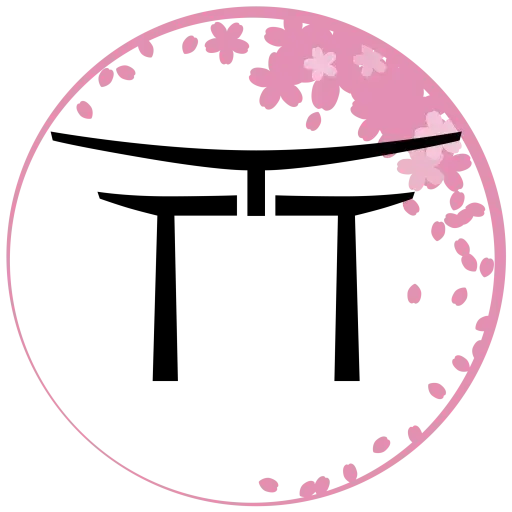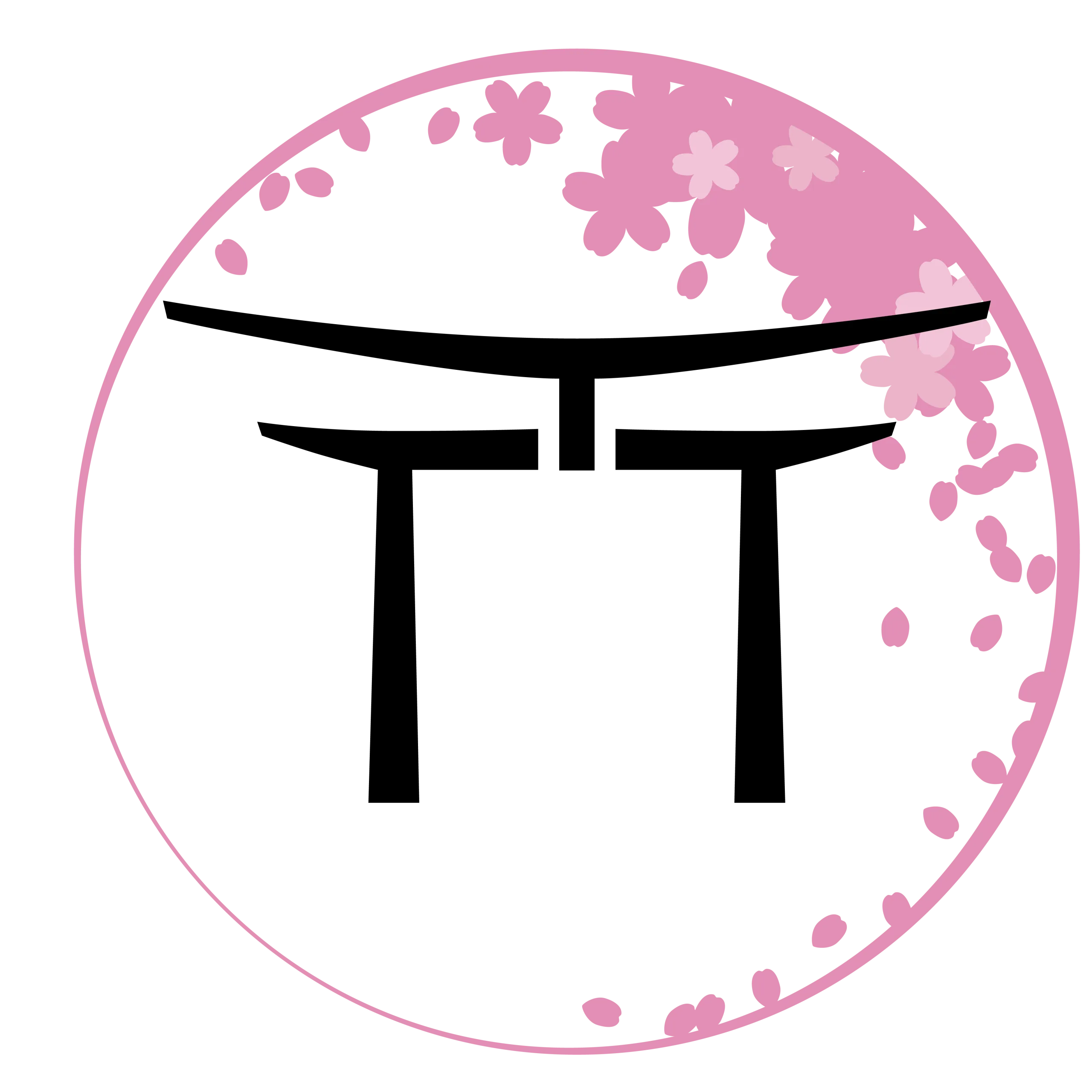Baby’s First New Year’s in Japan: Osechi Ryori, Otoshidama, and Hatsumode
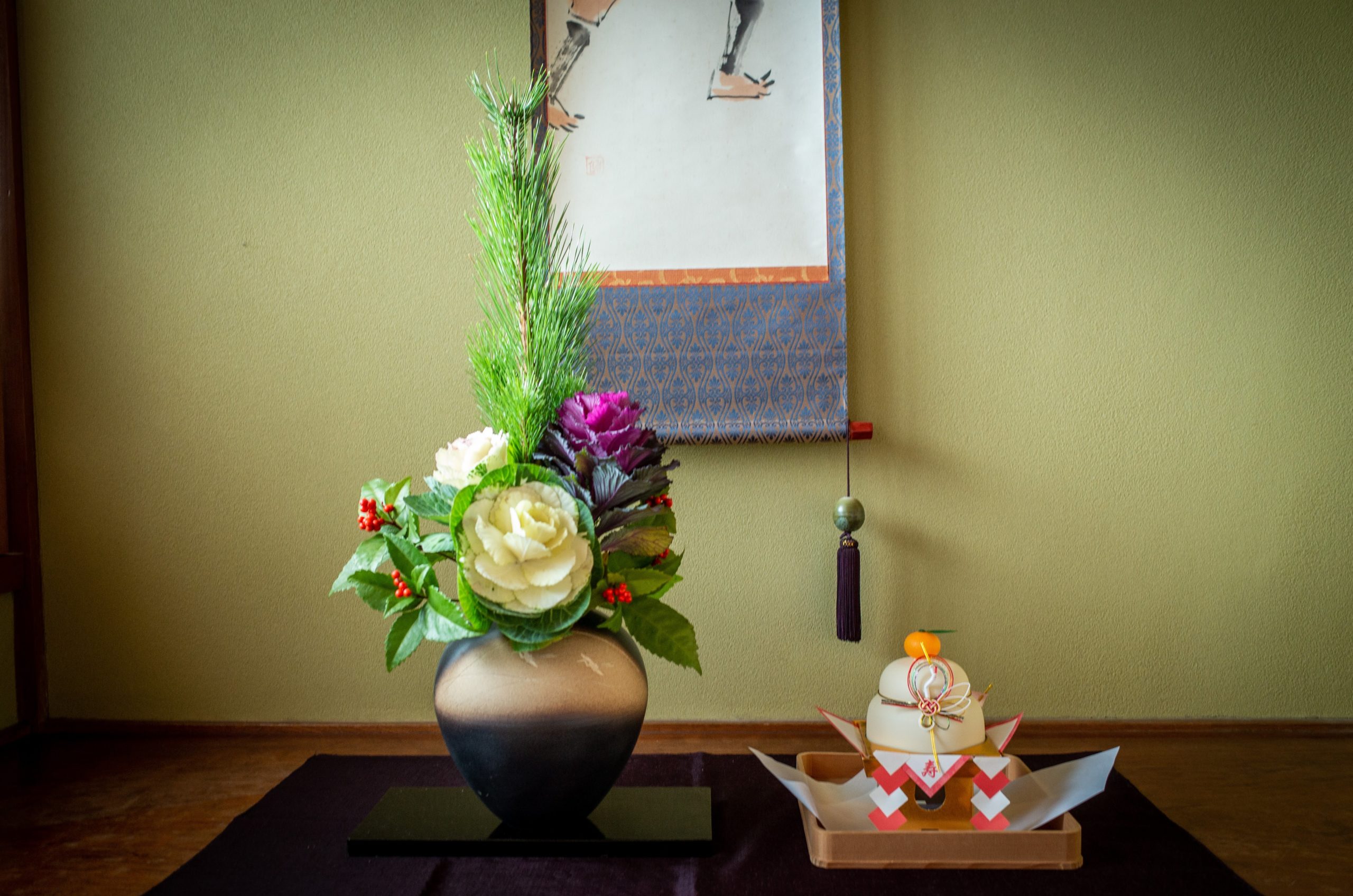
Last Updated on January 12, 2024 by Kay
This post may contain affiliate links, meaning I may earn a small commission on any purchases through those links at zero additional cost to you. Whatever I make goes to keeping this website running and I am forever grateful for the support. See my Privacy Policy for more information.
Ever since my husband and I moved back to Japan, we have spent every New Year’s in his hometown in Hiroshima.
This trip is something I always look forward to and this year was especially exciting for several reasons — it was our daughter’s first New Year’s (hatsu oshougatsu ・初お正月) and she would meet the rest of my husband’s family and my cousin-in-law’s daughter who is around the same age.
Traditionally, families in Japan celebrate New Year’s (oshougatsu・お正月) on January 1. People tend to return to their hometowns around the end of December so airports, train stations, and highways get very crowded around this time.
Just like everyone else, we usually went back to my husband’s hometown in Hiroshima before New Year’s Day and spent New Year’s Eve with my in-laws watching 紅白歌合戦 (Kouhaku Uta Gassen), a special show on NHK that’s aired only on New Year’s Eve where popular artists sing new and traditional songs, and eating 年越しそば (toshikoshi soba), a simple New Year’s dish of warm soba in broth. Toshikoshi soba symbolizes crossing into the new year by letting go of hardship.
This year, however, we decided to ring in the new year in Tokyo and then head to Hiroshima on January 1st via Shinkansen. One reason for this was that my mother-in-law had to go to the hospital three times a week, and January 1st happened to be one of those days.
When we arrived, I saw that my mother-in-law had already decorated the house for New Year’s by displaying mochi and a figure of that year’s zodiac animal (year of the rat). She also placed a shime kazari (しめ飾り) on the door, which is a wreath-like decoration made of straw that welcomes the gods into the home on New Year’s and repels evil.
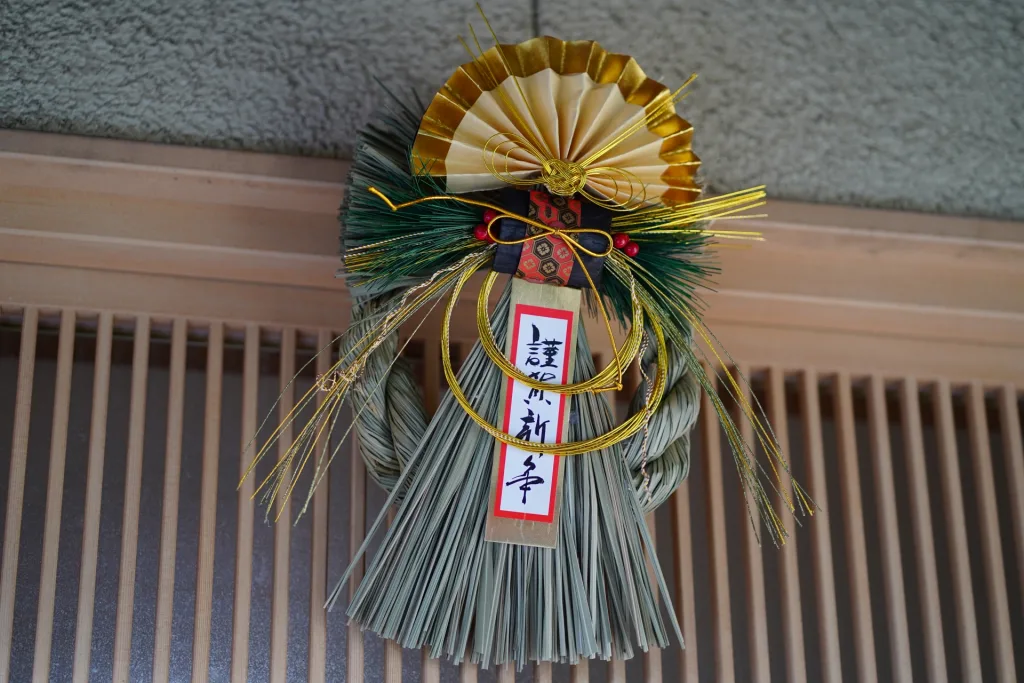
My daughter enjoyed spending time with her in-laws and exploring the home my husband had grown up in for the first time.
On January 2nd, my mother-in-law got to work bright and early at 5 AM to start preparing osechi ryori, which is traditional food eaten on New Year’s, as well as other dishes.
Table of Contents
What is Osechi Ryori?
Osechi ryori is a traditional meal eaten during New Year’s in Japan. It consists of large, square lacquer boxes filled with food that is shared among family members. A lot of dishes are preserved as well so that they can be eaten over several days, and each dish has a special meaning to it.
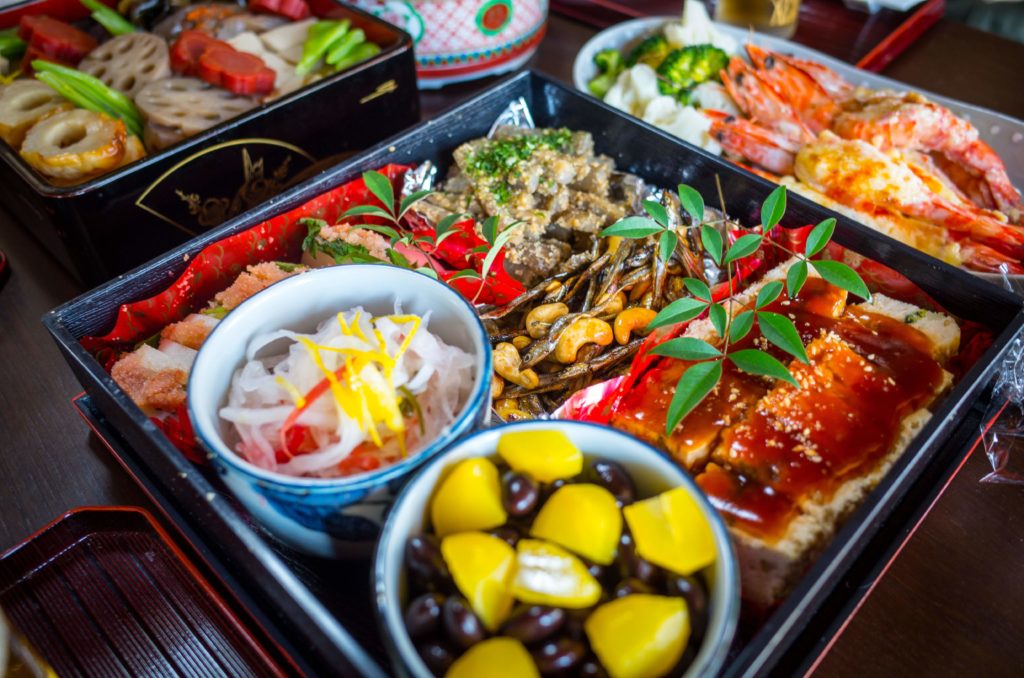 My mother-in-law’s osechi ryori
My mother-in-law’s osechi ryori
There are a ton of dishes in osechi ryori, some of which include:
- Black beans for repelling evil spirits
- Burdock for prosperity
- Mashed sweet potato with chestnuts (kurikinton, my daughter’s favorite when she became older.)
- Pickled carrots and radish (kohaku namasu), which is a dish in the celebratory colors of red and white in Japan
- Red and white kamaboko for celebration
It can be annoying to make everything so recently more people are simply buying osechi ryori online or from stores (usually these are reserved in advance).
Although osechi ryori is the traditional meal to eat on New Year’s, many families have additional dishes such as sushi.
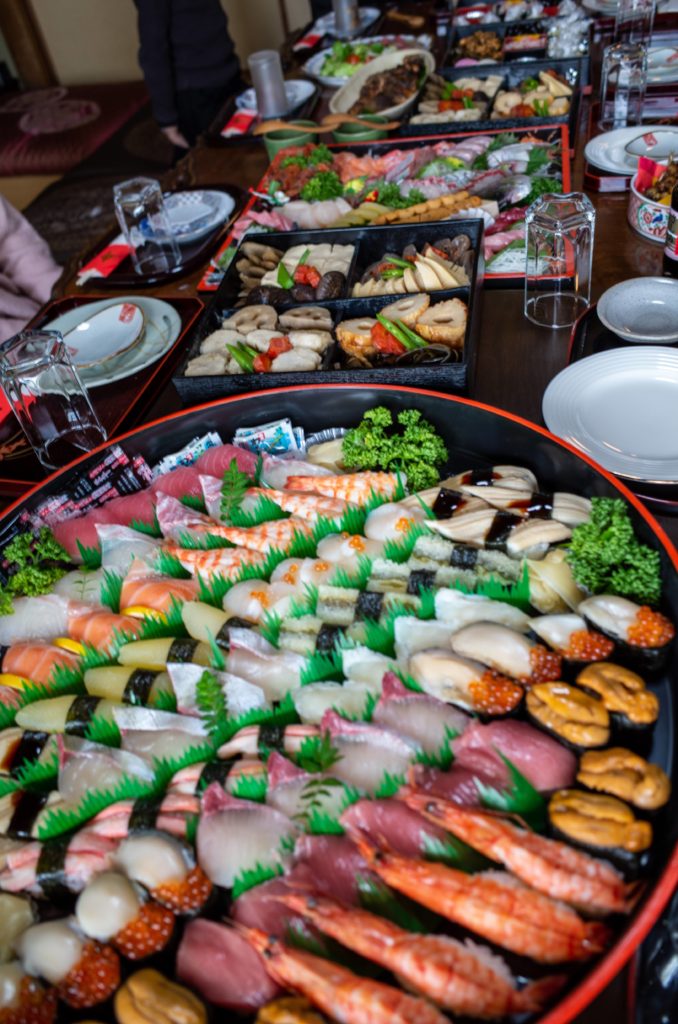
What would a New Year’s celebration in Japan be without sushi?
My mother-in-law has also started incorporating mashed potatoes as well, since she knows that’s something I like to have on Christmas, and my nieces love it!
Family Arrives and the Festivities Begin!
My husband’s family members began arriving at 10:30 AM, the first being his cousin, her husband, and their two daughters, O and R.
At last year’s New Year’s, my husband and I announced our pregnancy to the family, and we were surprised when my cousin-in-law had the same news. In fact, our due dates were only two days apart! Due to complications, however, her baby was born a month and a half before Baby A and was in the NICU for two months.
We were so happy and relieved when she was discharged and even more so to finally meet her almost half a year later. R was a bit smaller than Baby A and very calm in comparison. It was fun to see the two babies interact with each other (Baby A may have taken a rattle from R, oops) and to talk with my cousin-in-law about baby-related topics.
New Year’s in Japan usually involves eating, talking, and eating again, which is exactly what we did. Children also receive お年玉 (otoshidama).
What is Otoshidama in Japan? How Much to Give?
Otoshidama is a monetary gift given to children on New Year’s in a small, cute envelope from family members. The amount of money a child receives depends on their age.
For instance, preschoolers and younger (less than 6 years old) get between 1000 to 3000 yen on average.
Elementary school-aged children get between 3000 to 5000 yen on average.
Junior high school students get 3000 to 10,000 yen.
High school students get 5000 to 10,000 (!) yen.
Some people give otoshidama to their own children as well but my husband’s family doesn’t do that.
When my daughter got her first otoshidama, she readily grabbed her お年玉 from her aunts and uncles, making them laugh and comment that she already knew the value of money.
After consulting with each other, my husband and I decided to open a bank account for her and deposit any monetary gift Baby A receives. At the moment, we’re not sure at what age we will give her access to her account.
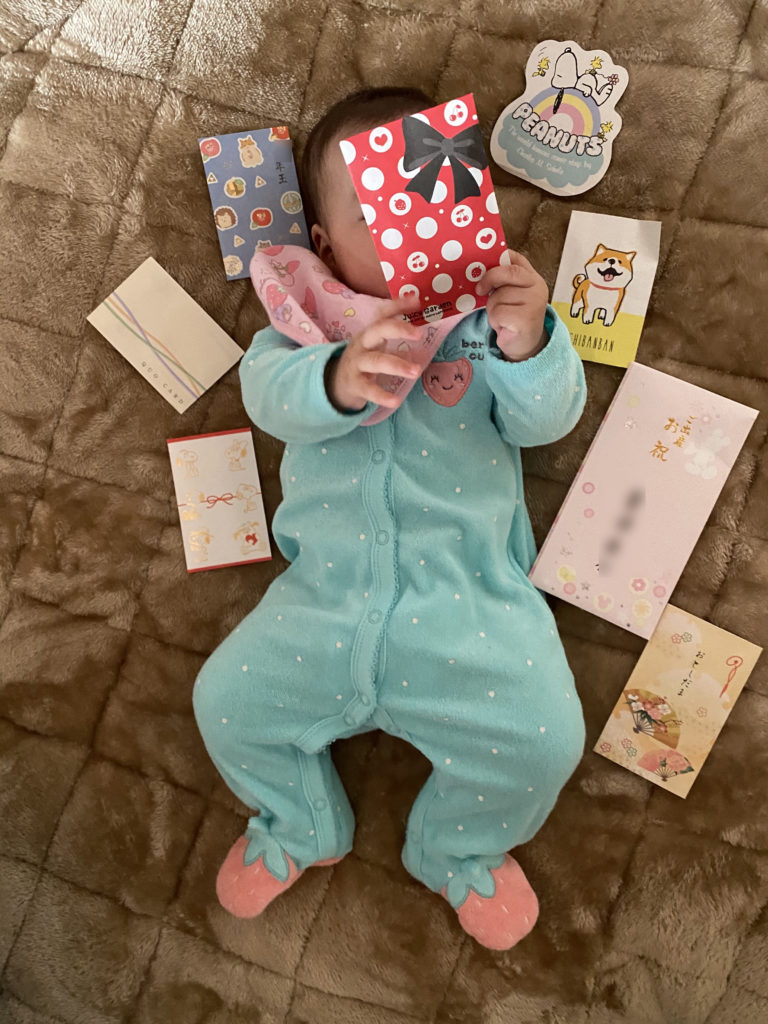 Checking out her first otoshidama
Checking out her first otoshidama
Baby A enjoyed playing with her cousins, all girls ranging from 5 months to 10 years old. (We like to joke that it’s the 女子会時代, or Girls Party Generation.) Even Baby A’s 3-year-old cousin couldn’t get enough of hugging her and patting her head while saying, “yoshi yoshi・よしよし”(there there). It was adorable.
There are no children around my daughter’s age on my side of family so I’m very grateful that my husband’s side has so many. My daughter also got to meet her great-grandfather, who is almost 90 years old and usually bedridden but put on his finest outfit and came to visit to see his newest great-granddaughter. None of my grandparents are still alive so it was unbelievably special for me to see Baby A being held in his arms.
(Update: My husband’s grandfather passed away a few months later, so I’m very grateful he had the chance to meet his great-granddaughter.)
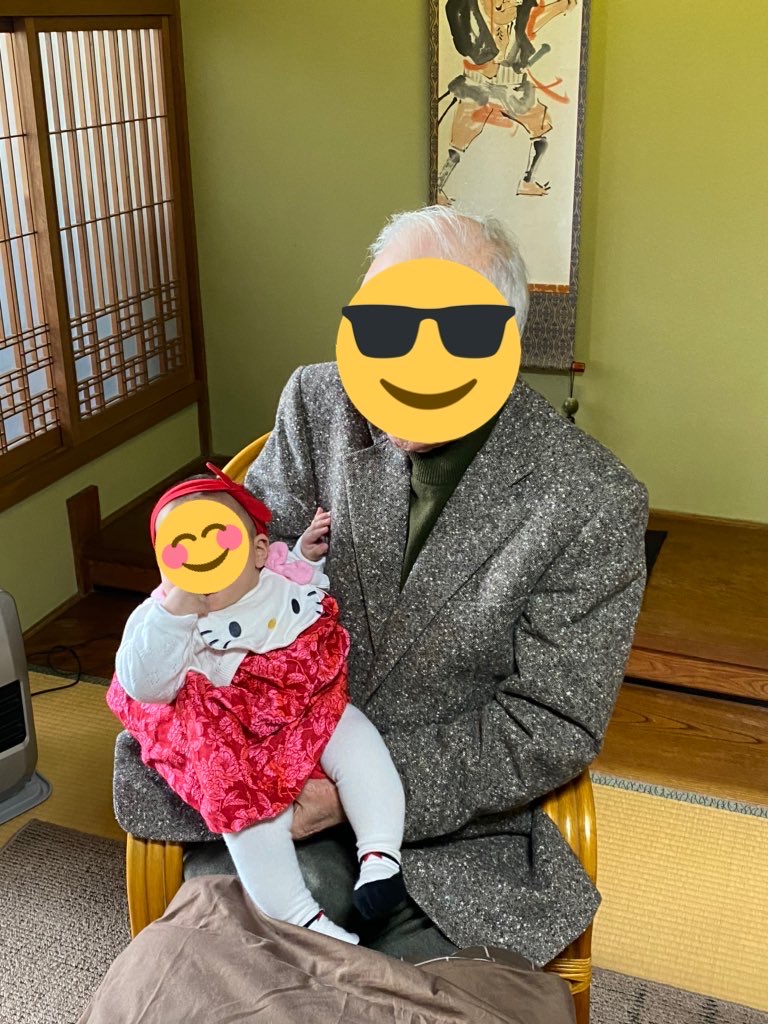 Baby A with her great-grandfather
Baby A with her great-grandfather
Hatsumoude, the First Shrine Visit of the Year in Japan
Near the end of our trip, we went for 初詣 (hatsumoude), the first shrine visit of the year. Shrines are typically very busy during hatsumode, with lines of people going from the evening of the 31st to around the 2nd or 3rd of January. But since we went much later, there was hardly anyone there.
After giving a small offering and praying at the shrine, we drew our fortunes, and my husband and I both got fairly good ones. 2019 had been the most eventful year of our lives so we can only imagine what 2020 has in store for us as new parents. (Update: As everyone knows, it was the start of a pandemic!)
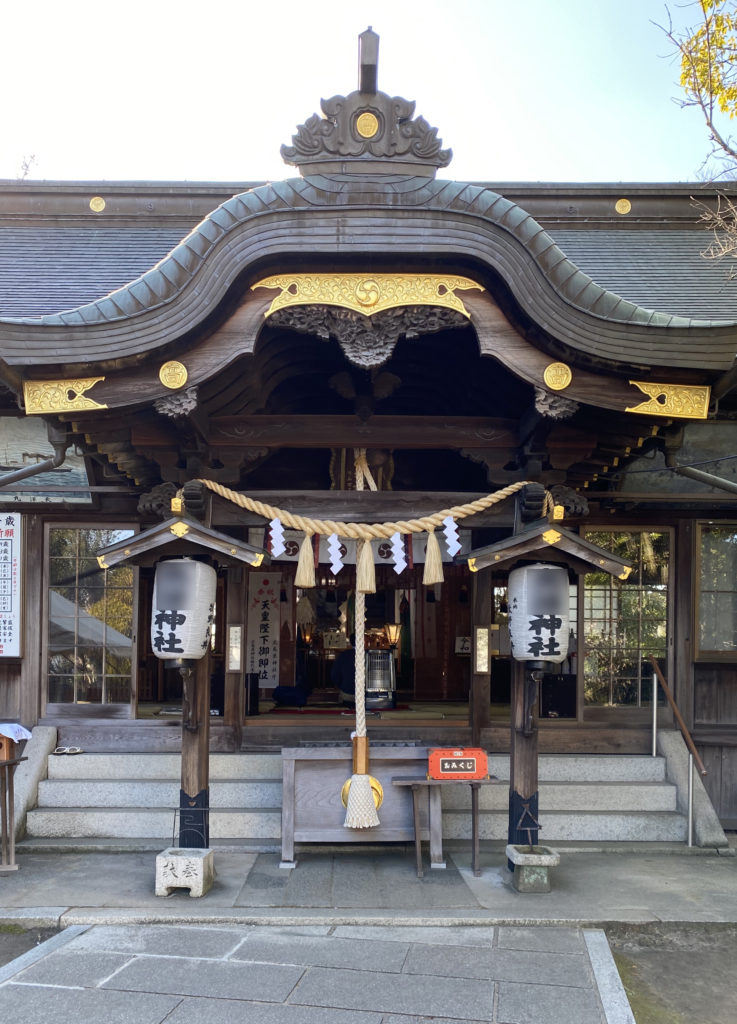
I hope you enjoyed this article on how my family spent our daughter’s first New Year’s in Japan!
